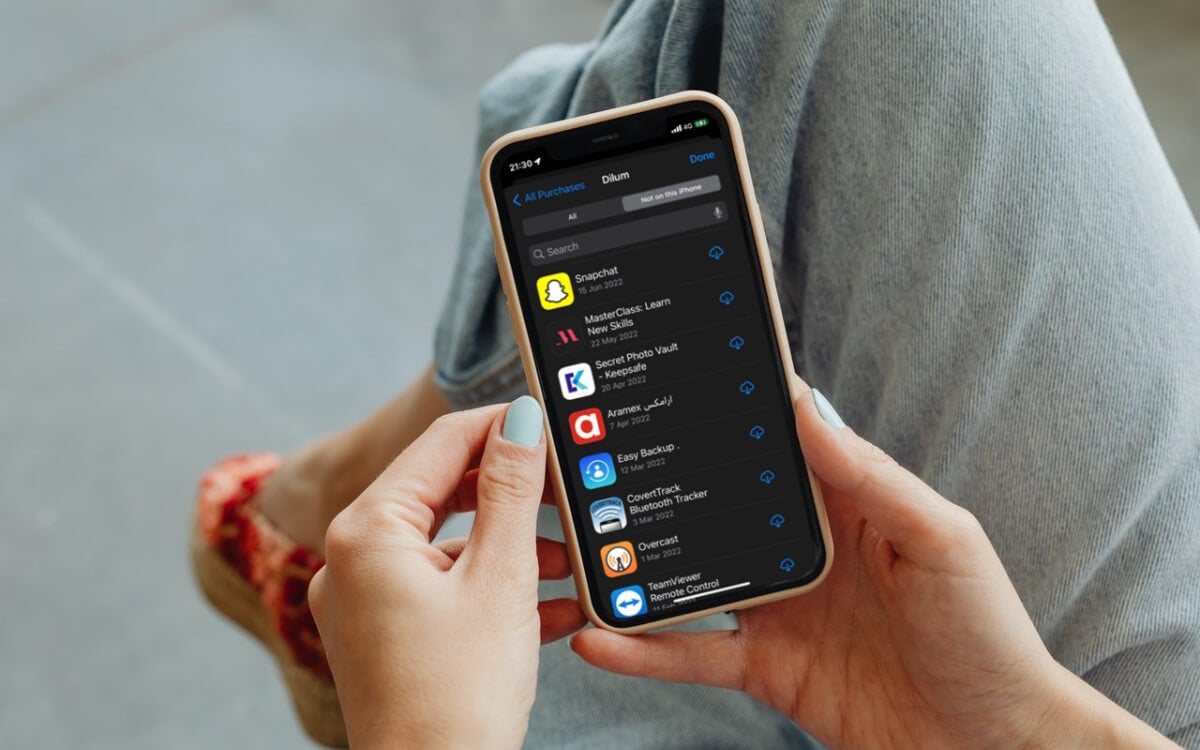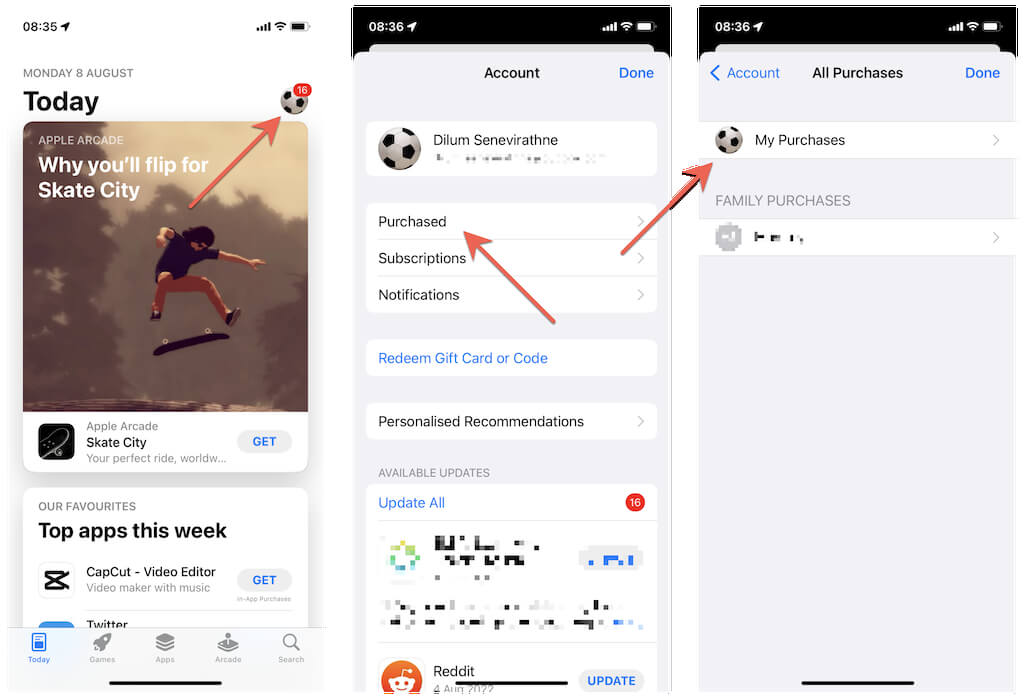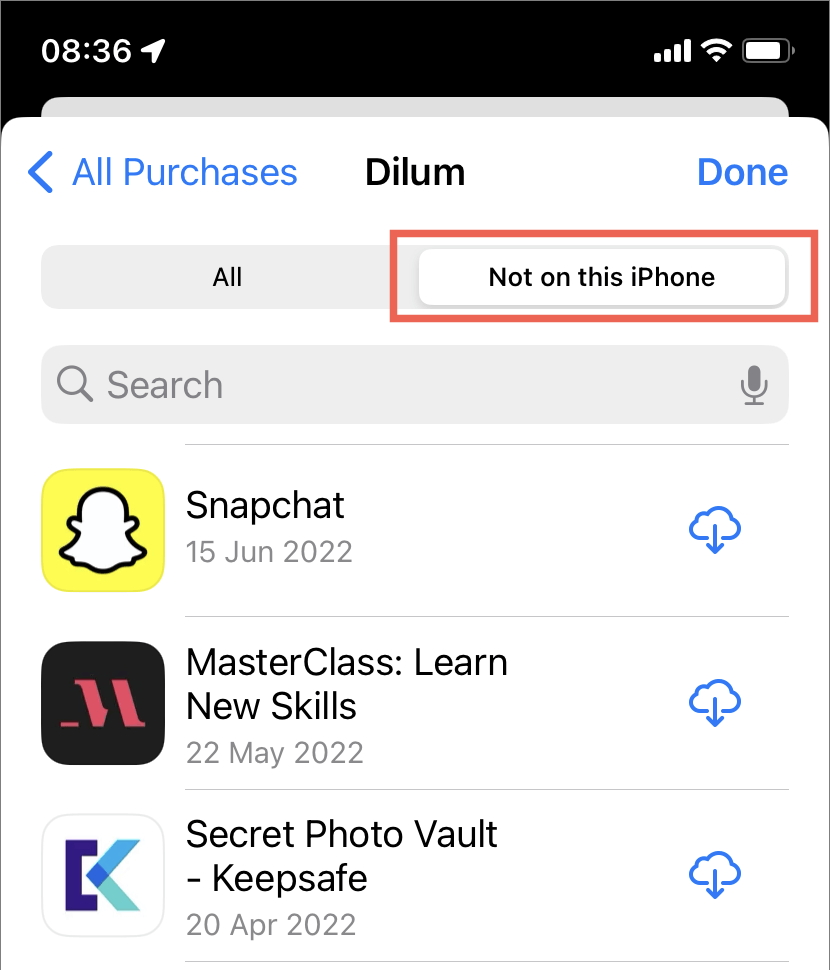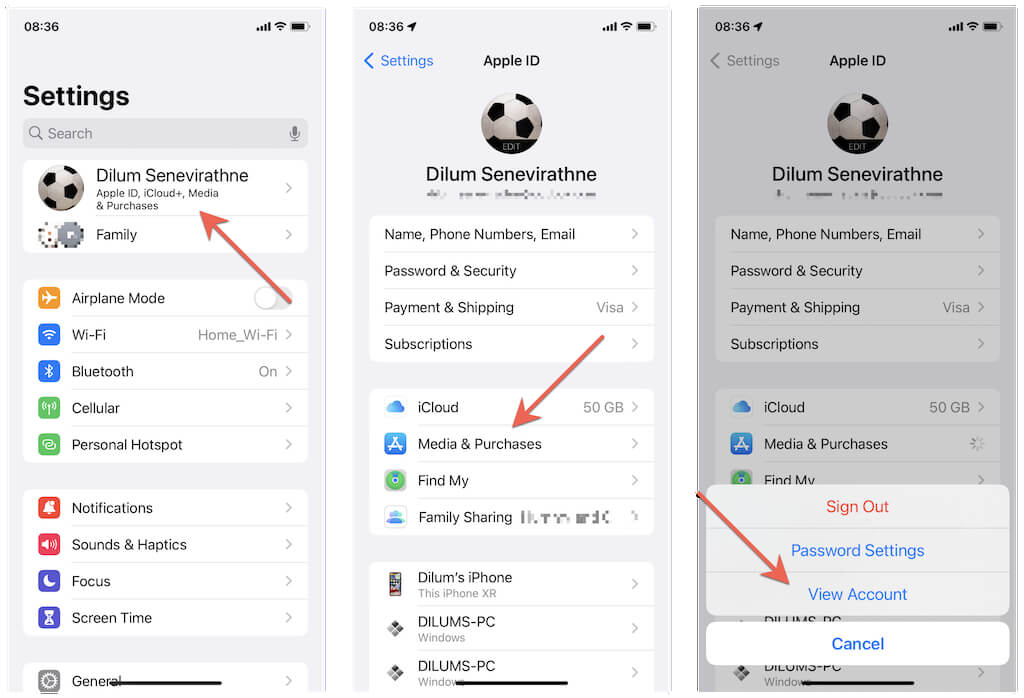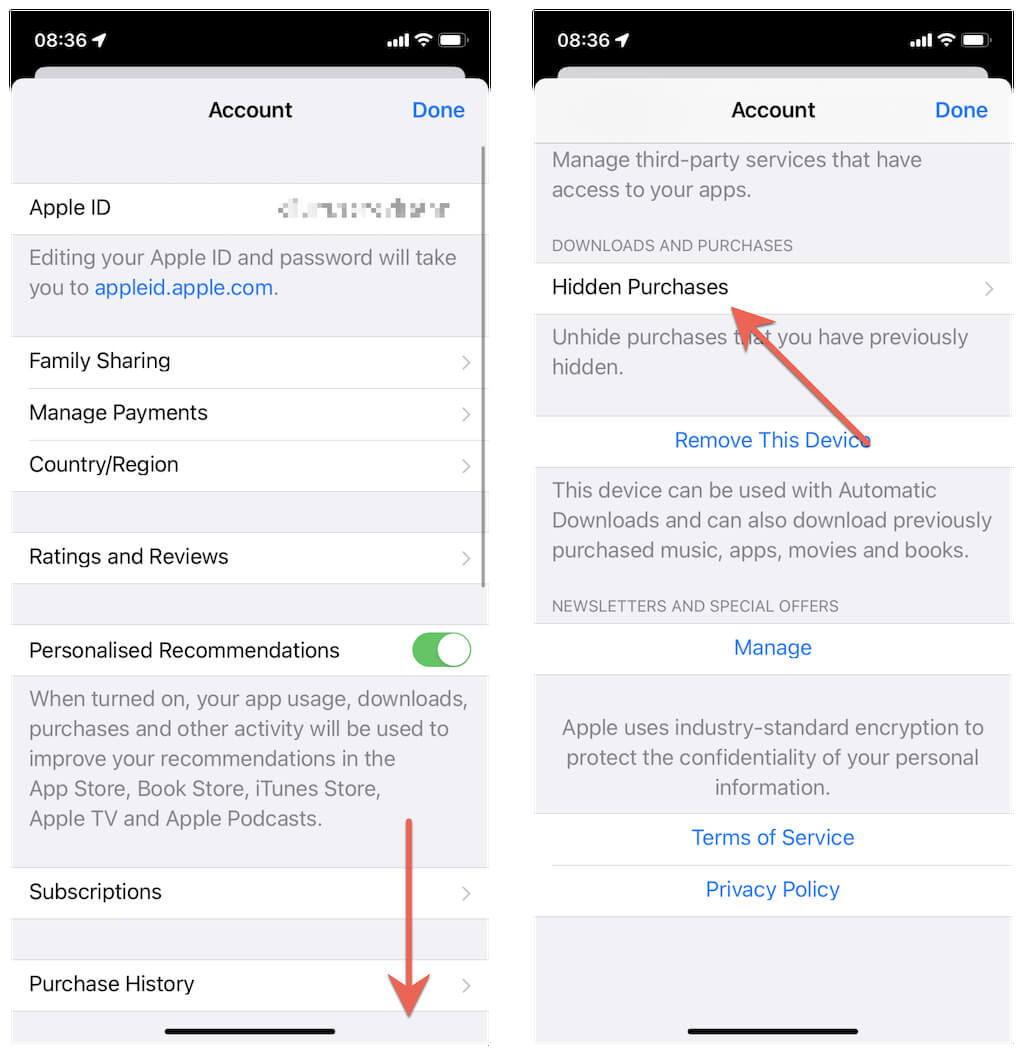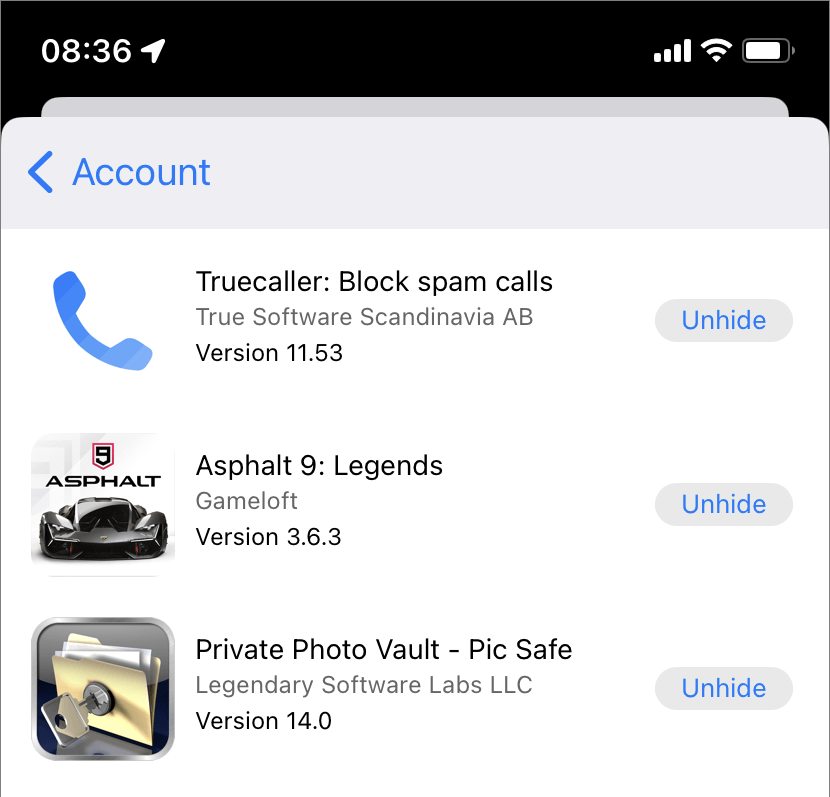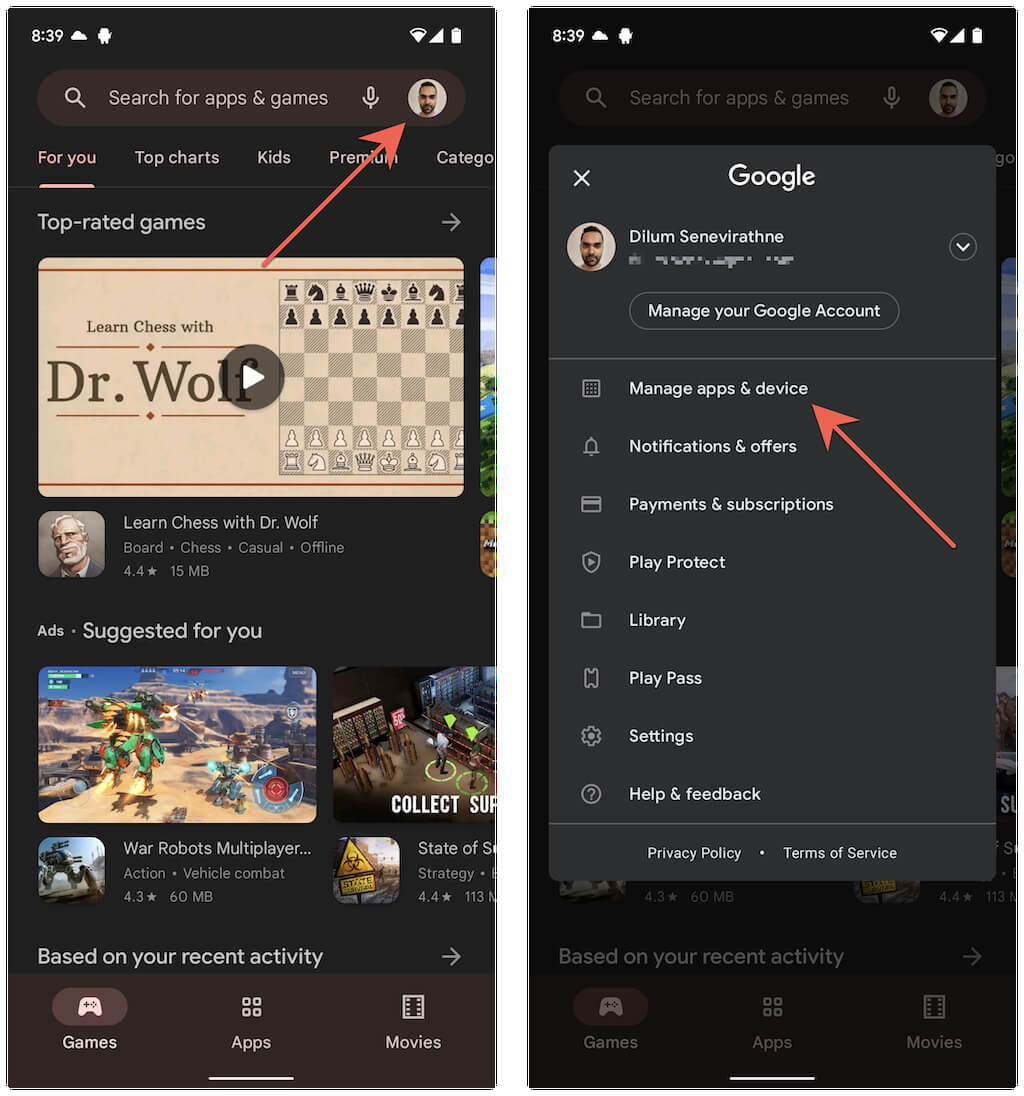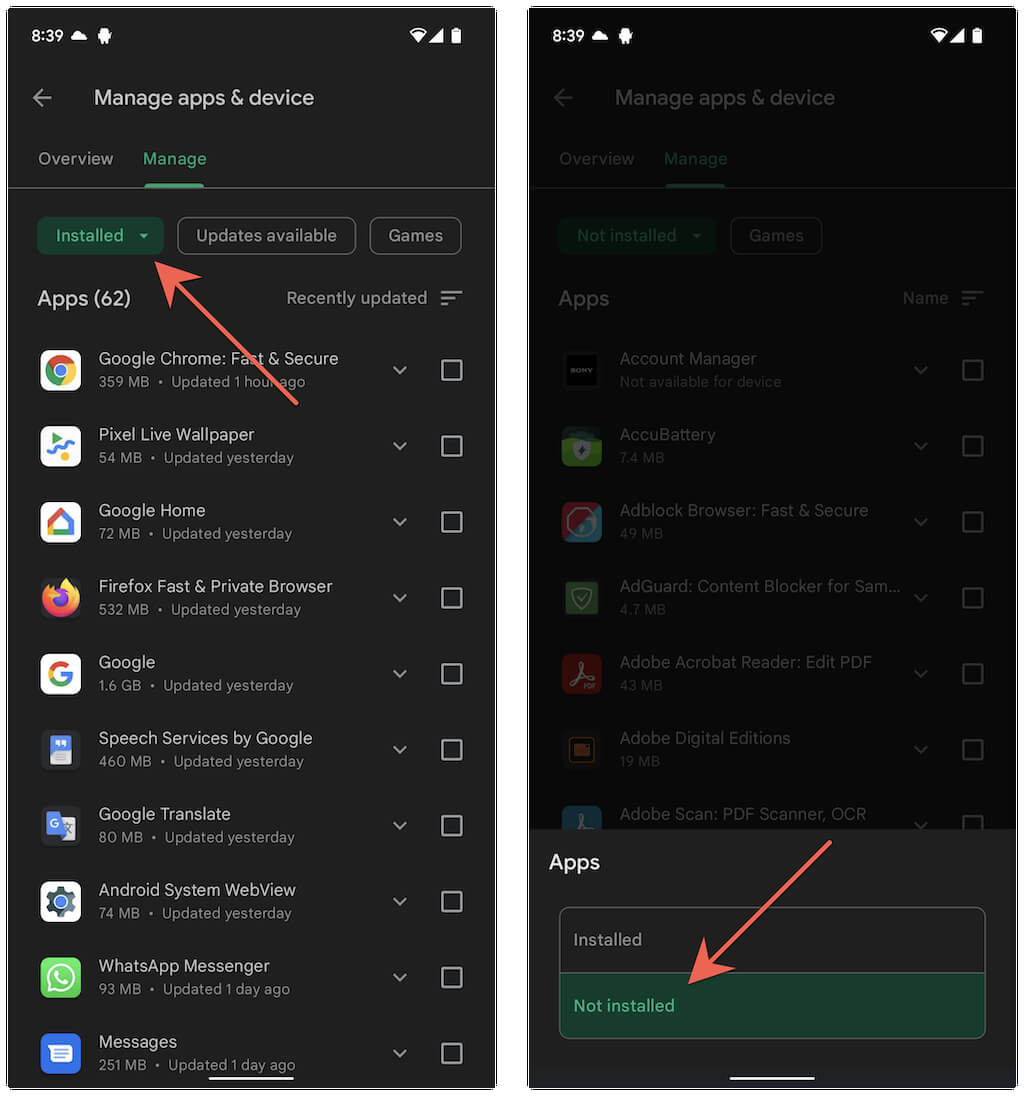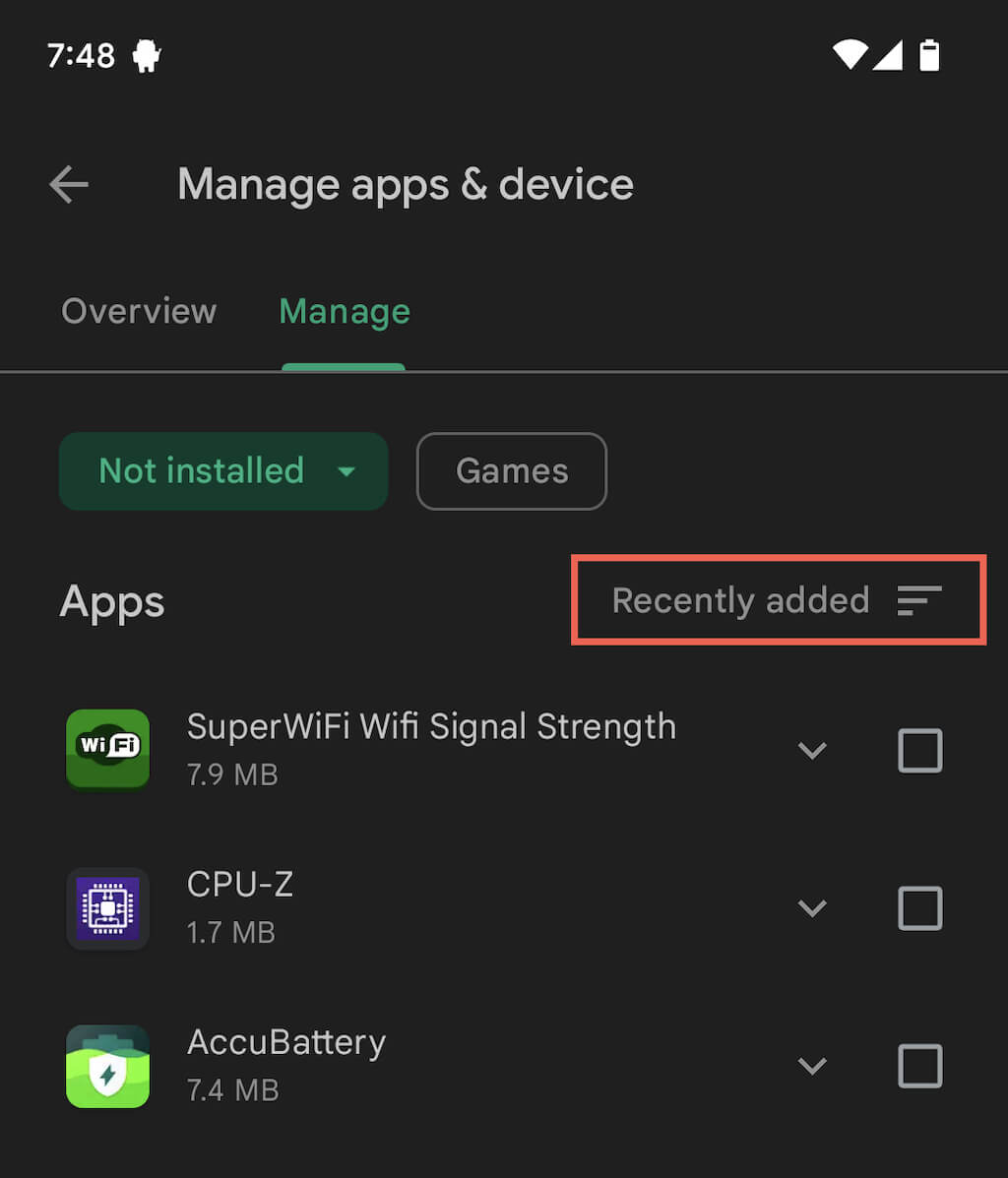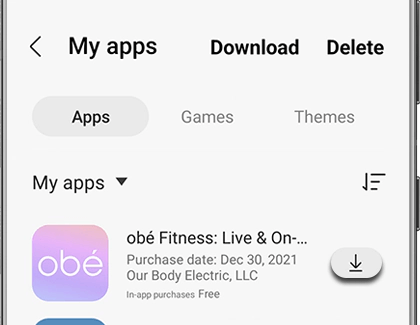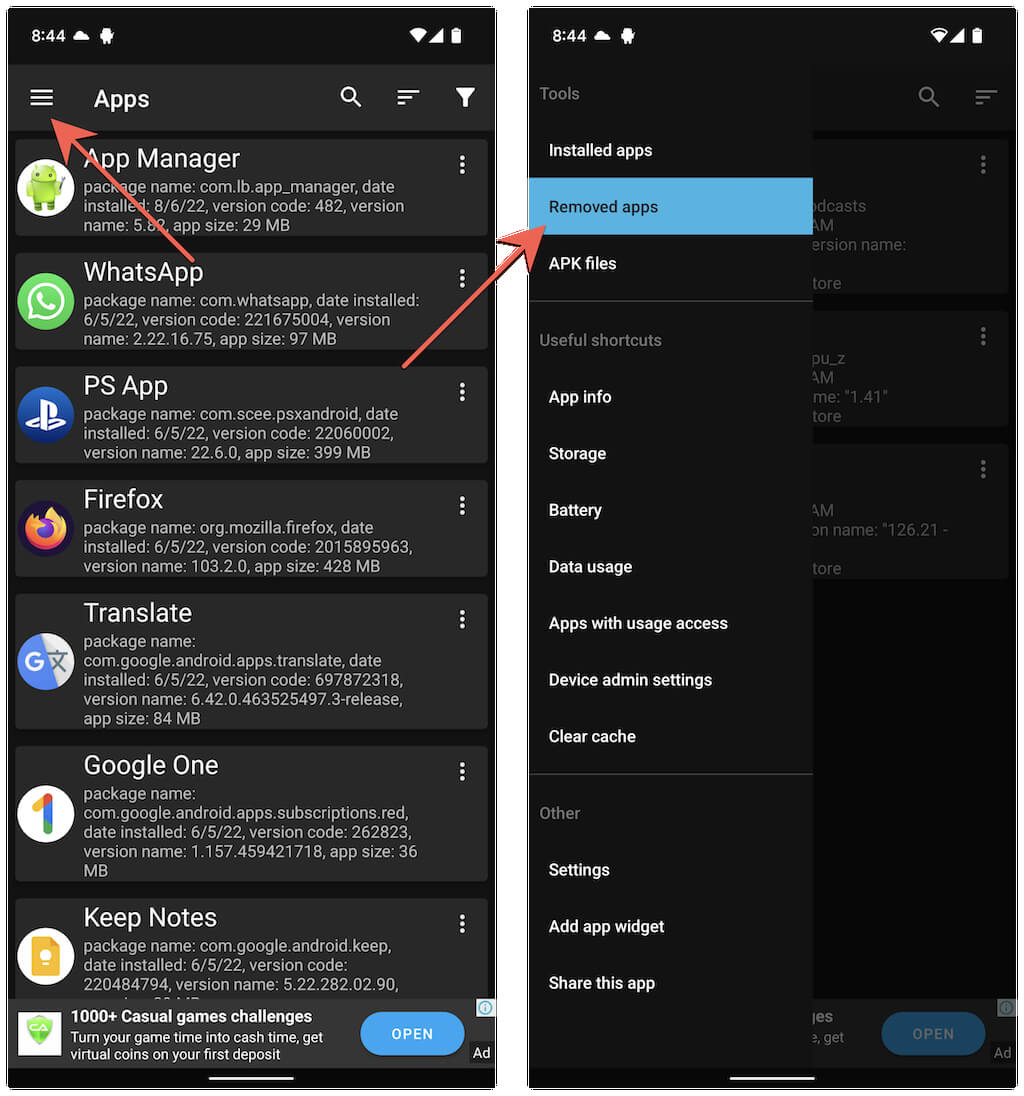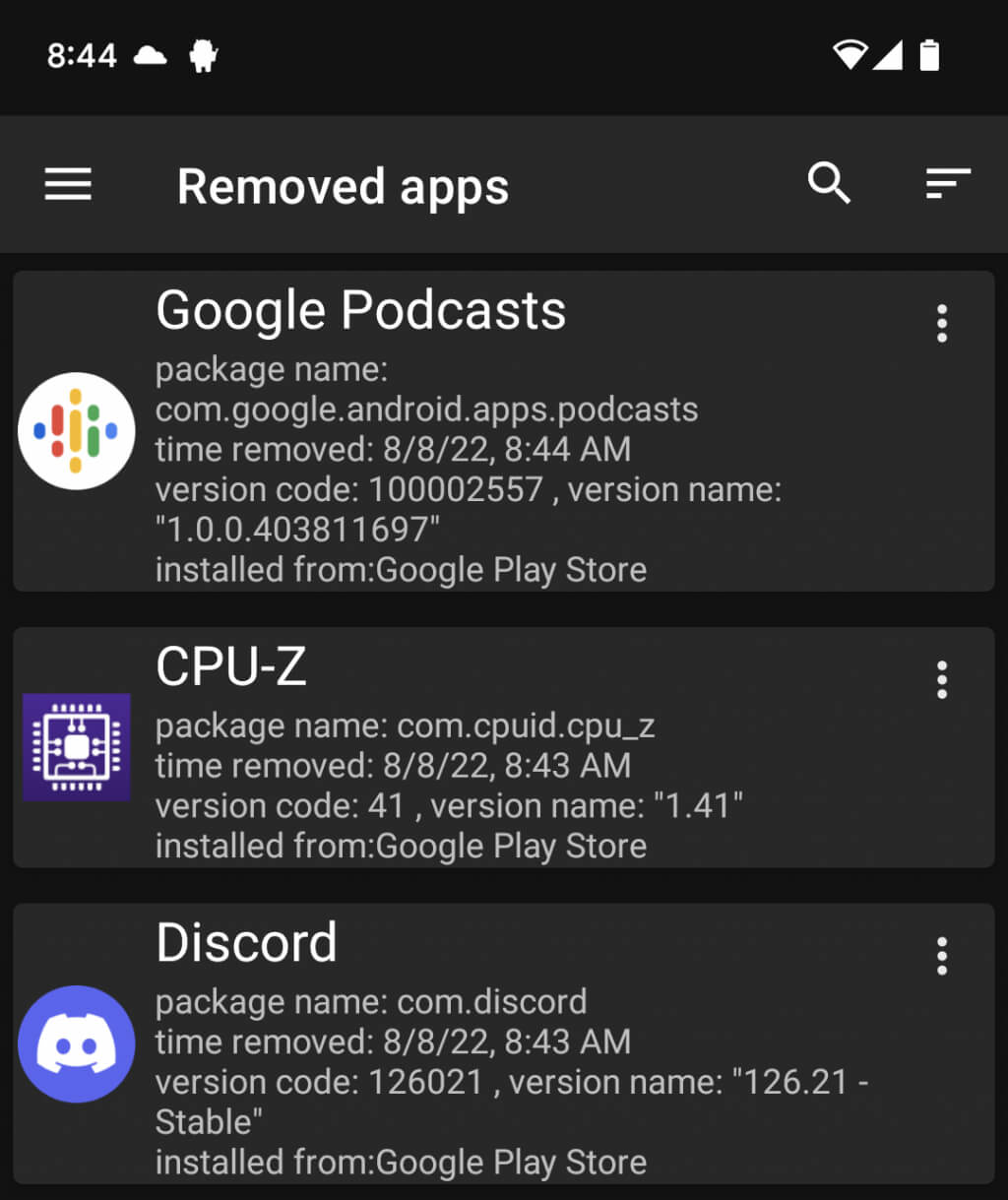Although iOS and Android do not keep track of deleted apps, you always have the option of viewing a list of apps that aren’t present on the device. It’s then quite easy to get an idea of any apps that you—or someone else with access to your device—may have recently downloaded and deleted.
See Recently Deleted Apps on iPhone and iPad
The best way to check for apps you might’ve recently uninstalled on the iPhone and iPad is to check the App Store’s purchases list. Don’t worry—it also logs all free-to-download apps.
To access your purchases list on the App Store:
If an app is at the top of the list and appears to be a fairly new addition, it is safe to assume that it has been recently deleted.
However, it’s also possible that you—or someone else—may have deleted an app further down the list a short while ago. Sadly, there’s no way of knowing that other than to check the Files app for traces of recent app activity.
If you want to redownload an app on the list, just tap the Download icon next to it. If you also want to get back the deleted data related to the app, you may have to resort to restoring your iPhone via iCloud or iTunes. However, some apps like WhatsApp and Snapchat have built-in backup mechanisms, so you may want to check for that first.
That said, the iPhone and iPad also allow you to hide purchases on the App Store. Hence, viewing your hidden purchases list is also a good idea. To get to it:
That should bring up a list of apps you’ve hidden on your iPhone and iPad. The most recently hidden purchases or downloads will appear at the top of the screen.
The hidden purchases list doesn’t offer a Download button, so you must Unhide the app and download it via the App Store’s purchases list (which lets you figure out exactly when the app was initially downloaded or purchased). If you don’t want to bother with the details, just search for the app on the App Store and download it.
Tip: The iPhone and iPad provide multiple ways to hide apps from the Home Screen without uninstalling them. Learn how to find hidden apps on iPhone and iPad.
See Recently Deleted Apps on Android
If you use an Android phone, the quickest way to figure out apps recently removed from your device is to use the Google Play Store.
To find deleted apps—paid and free—on your Android device:
If there are any apps that you like to download, check the boxes next to each item and tap the Download button. You may also want to learn how to restore or recover deleted app data.
The above list will not show apps specific to an Android phone manufacturer—e.g., Samsung. So, you might also want to check the third-party app gallery built into your device instead.
For example, to check a list of uninstalled apps in the Samsung Galaxy Store:
Scroll down the list and tap the Download icon next to any apps you want to install.
Use Third-Party Utility to Monitor App Uninstalls on Android
It’s impossible to use the Google Play Store and app galleries like the Galaxy Store to identify all recently deleted apps since the best you can do is filter uninstalled apps by purchase/download date.
To counteract that problem, you can install a third-party utility on Android devices to keep track of deleted apps going forward. That will also include sideloaded apps from APK repositories.
For example, here’s how to use App Manager to see recently deleted apps once you’ve finished setting it up.
Note: To ensure that the most recently deleted apps appear at the top, tap the Filter icon and confirm that the By removal time filter is active.
App Manager aside, many other tools on the Google Play Store can track recently deleted or missing apps, so feel free to check. However, similar apps are not available for the iPhone.
Keep Track of Your Apps
As you just saw, it’s not too difficult to get an idea of recently uninstalled apps by viewing your iPhone or Android’s purchase histories. Hopefully, both mobile operating systems will add native options that make it easy to track recently uninstalled apps in the future. If you use an Android device, don’t forget that you always have the option of manually setting up an app monitoring tool to keep logs of all app uninstalls.
